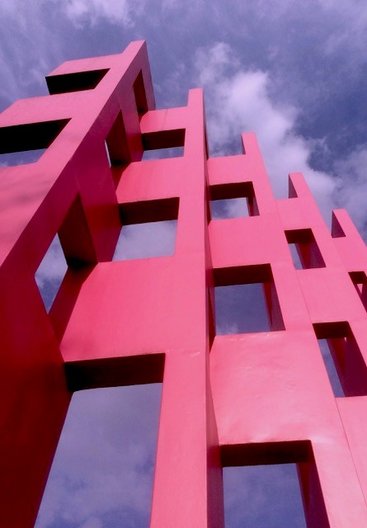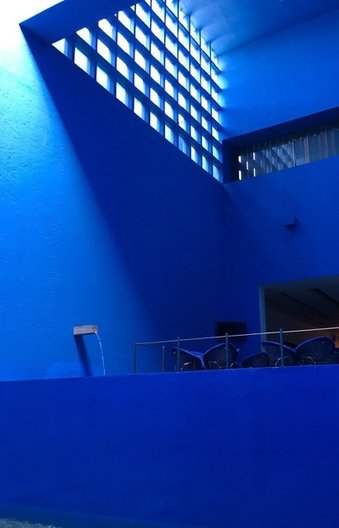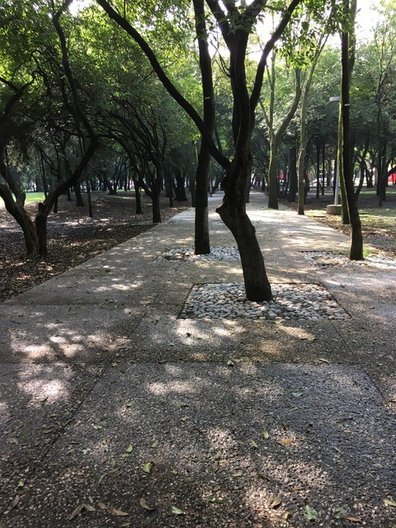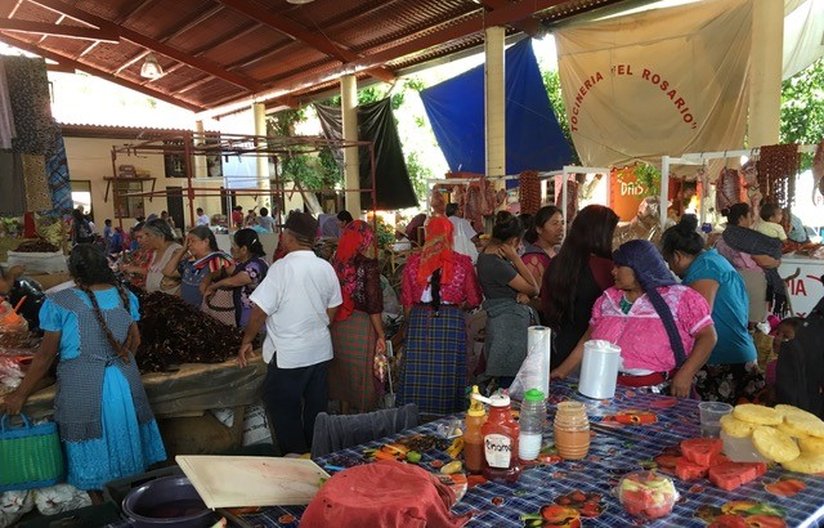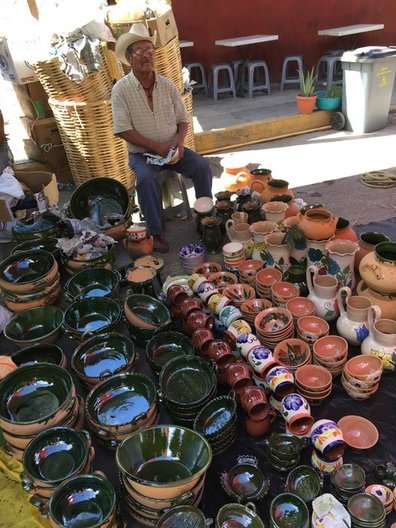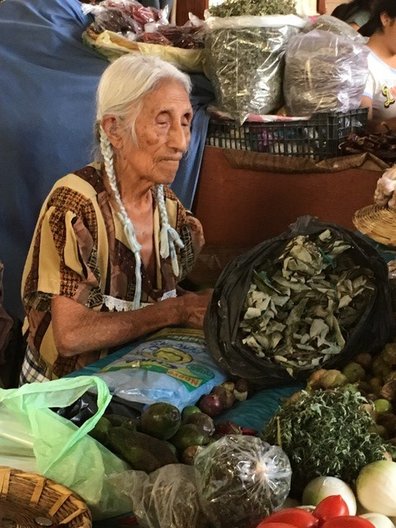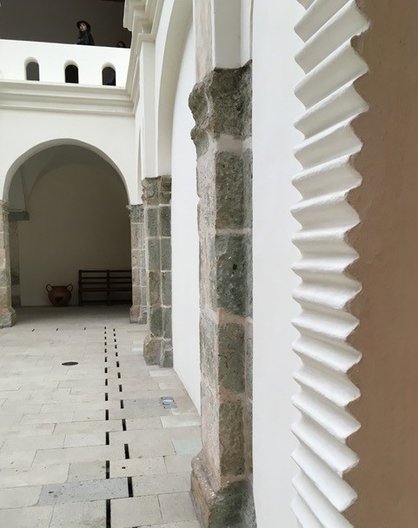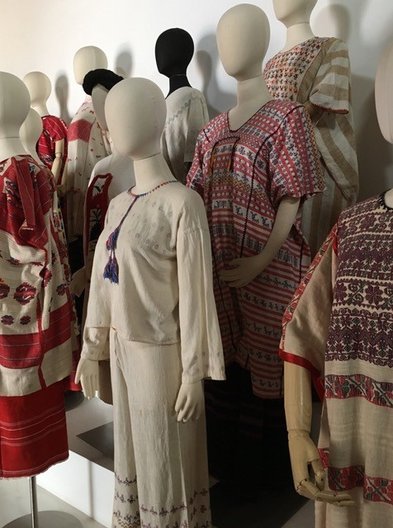14 November 2018
by Carol Sinclair
Following the initial phase of Crafting Futures Mexico in 2017, Applied Arts Scotland has joined us as a UK strategic partner for the programme, which will continue to take place in Oaxaca, Mexico, in early 2019. Carol Sinclair, from Applied Arts Scotland, reports on her recent scoping visit to Mexico City and Oaxaca with leading Mexican design curator, Ana Elena Mallet, British Council Mexico, and our strategic partner in Mexico, Oax-i-fornia.
I have recently returned from a scoping visit to Mexico City and Oaxaca to explore bringing together Mexican designers and artisans with Scottish craftspeople on a making residency. This was my first trip to Mexico, so in this travelog I will share my initial impressions. Thank you to the British Council Mexico team for all of their kindness, I feel very privileged to have been given such a immersive and fascinating introduction to the country and it’s people.
Mexico City
My very first experience of Mexico City was arriving on a wet Friday rush hour, and travelling through seemingly endless traffic in the dark. Then I woke up on a sunny Saturday morning to be properly introduced to the city through the eyes of architects Luis Barragán and Ricardo Legoretta and the remarkable Camino Real Polanco Hotel they designed for the 1968 Olympics. The vivid colours, including the iconic "Mexican pink", capture and transmit energy, while the dark corridors and beautiful natural materials and tones of the private areas of the building exuded calm and tranquility.
I was lucky enough to visit Casa Gilardi later in my trip, a Barragán designed house still lived in by the family who commissioned it. Our guide was the son of the family, also an architect, who spoke knowledgably and inspirationally about the house he had grown up in. He also shared his view of Barragán’s design philosophy and the intent to capture the duality of human experience - light and dark, positive and negative, colour and its absence.
Reflecting on my introduction to Mexico City I see that this duality is in fact the very essence of my experience. The heavy congestion of the city streets contrasting with it’s leafy parks and tranquil spaces. The grand architecture of the public cultural buildings, their impressive outer skins contrasting with the style and exuberance of their internal spaces. Contrasts are everywhere and drive not just the look of the city but also the discourse, decisions and politics. There were even two distinct Design Weeks taking place at the same time during my visit. And perhaps it is this duality, and the inevitability of pushing against something, that gives Mexico City its vitality. I have not experienced a city that exudes such palpable energy. The people I met had such extraordinary drive and determination to use culture, creativity and design to make life better for themselves and their communities.
Oaxaca
My introduction to Oaxaca was a trip to Tlacolula market, one of the oldest open air markets in Mesoamerica and the largest and busiest in the Central Valley area. The mix of products for sale and people selling was visually captivating, with practical objects, local speciality foods and traditional craft items on offer for everyday use. The most surprising thing for me as a Scot was noticing that the traditional dress of a particular group of women included a folded tartan skirt, with each woman wearing a different colour and pattern. This has initiated further research into the choice of this particular cloth and an investigation into any potential links with Scotland.
Oaxaca City is a very important centre for the promotion of local culture which has a strong emphasis on crafts. Towns and villages with specialist making expertise radiate out from Oaxaca in every direction, making this area one of the most important in Mexico for craft production. However a changing appetite for locally made items alongside a global shift towards cheaper products are making the life as an artisan more and more precarious. The relationships between those who design, produce or deliver to market can be tense and lacking in trust, although where these functions co-exist well the results are life changing for these fragile communities. The reason for our visit was to explore these relationships and see where collaboration and discourse between Scottish and Mexican makers could be useful.
Many of Oaxaca’s cultural buildings, museums and libraries, have been created through private collection and donation. The Textile Museum houses the collections of Ernesto Cervantes and his wife Josephine Brown, Belber Jimenez Museum shows the private collection of the owner and the Oaxaca Institute of Graphic Arts has been donated by the artist Francisco Toledo.
The Rufino Tamayo Museum of Pre-Hispanic Art is particularly interesting, not least for the use of bold colour as a backdrop to it’s exhibits, but also because of the way in which the pieces are arranged. Breaking with tradition, Tamayo arranged the work aesthetically, paying no attention to their date or source. This results in a refreshingly free and natural display which celebrates each item purely for its subject or shape.
The cathedrals and churches in and around Oaxaca speak of its turbulent past, and the religious struggles for power in the region. Richly decorated and highly ornate the quality of craftsmanship is outstanding.
With so many cultural and visual riches on offer, I know the Scottish makers who visit Oaxaca in the months to come will be greatly inspired by what they see. And in turn we very much look forward to welcoming our new Mexican and Oaxacan friends to Scotland.
